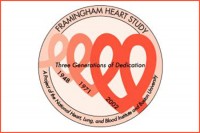New Tool to Identify Persons with Nonalcoholic Fatty Liver Disease

A new diagnostic model, known as the Framingham Steatosis Index (FSI), which is highly predictive of nonalcoholic fatty liver disease (NAFLD), may become a cheaper and easier alternative to screen for liver fat, the major feature of this condition. These findings appeared in the journal Clinical Gastroenterology and Hepatology, and was a collaborative effort led by corresponding author Michelle Long, MD, assistant professor of medicine.
 Using data from the Framingham Heart Study (FHS) researchers performed a cross-sectional study of more than 1,000 members of the Framingham Third Generation Cohort. FHS participants with fatty liver disease were identified by abdominal CT scans. Researchers evaluated a comprehensive list of demographic, clinical and laboratory parameters including liver enzymes such as alanine aminotransferase (ALT) and aspartate aminotransferase (AST) and the ratio of AST:ALT to identify people with hepatic steatosis.
Using data from the Framingham Heart Study (FHS) researchers performed a cross-sectional study of more than 1,000 members of the Framingham Third Generation Cohort. FHS participants with fatty liver disease were identified by abdominal CT scans. Researchers evaluated a comprehensive list of demographic, clinical and laboratory parameters including liver enzymes such as alanine aminotransferase (ALT) and aspartate aminotransferase (AST) and the ratio of AST:ALT to identify people with hepatic steatosis.
The data was analyzed to find a set of predictors of hepatic steatosis. The researchers found that a model that includes age, gender, hypertension, triglyceride levels, diabetes and the ratio of AST:ALT correlated with NAFLD. The FSI was then externally validated and was found to be an effective surrogate diagnostic index for NAFLD.
“Clinically, the FSI may be useful to help identify NAFLD patients or those at high risk for steatosis who may benefit from abdominal imaging. Additionally, the ALT:AST ratio may be considered a useful surrogate for hepatic steatosis (versus either ALT or AST alone) especially for future population-based studies,” explained Long, who is also a gastroenterologist at Boston Medical Center (BMC).
This study is a collaboration between BUSM; the Division of Gastroenterology at BMC; the National Heart, Lung, and Blood Institute’s Framingham Heart Study; the Department of Epidemiology, School of Public Health, University of Alabama; the Department of Mathematics and Statistics, Boston University; the Radiology Department, Massachusetts General Hospital, Harvard Medical School and the Division of Endocrinology, Hypertension, and Metabolism, Brigham and Women’s Hospital, Harvard Medical School.
Funding for this study was provided by BUSM and the National Heart, Lung, and Blood Institute’s Framingham Heart Study (contact N01-HC-25195 and HHSN268201500001l) and the Division of Intramural Research of the National Heart, Lung, and Blood Institute.